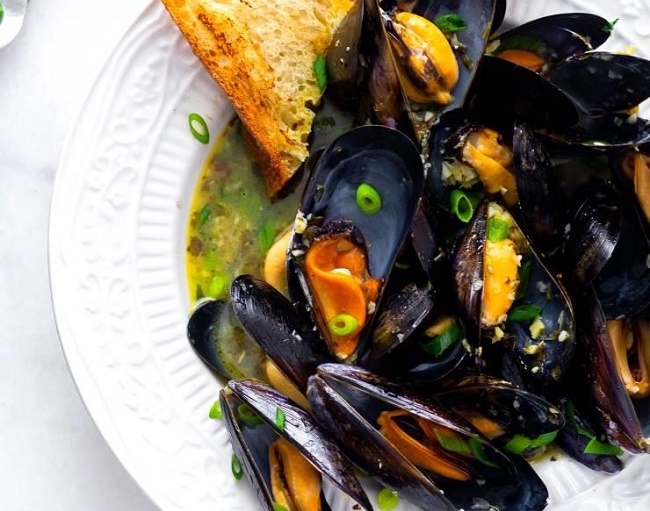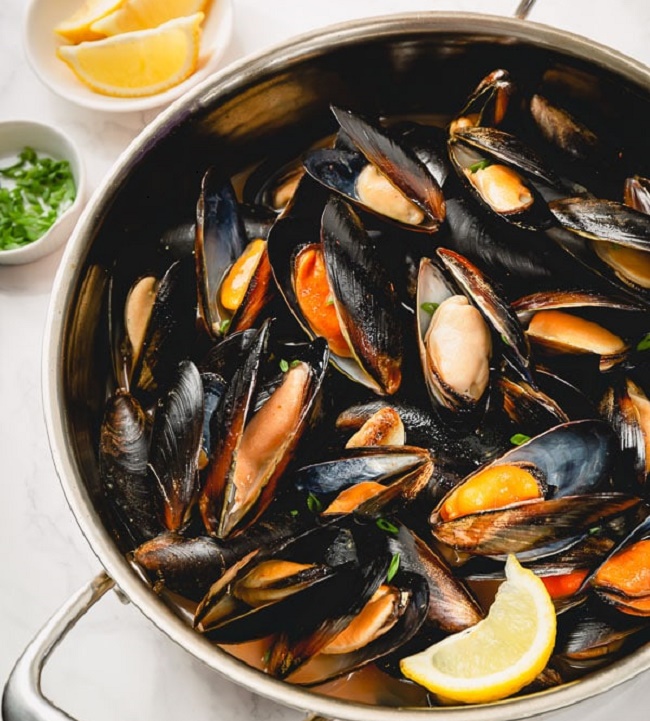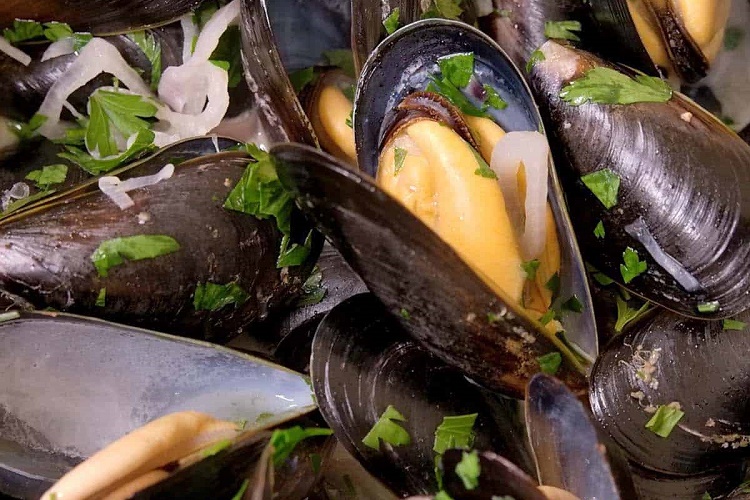In addition to growing in saltwater over the whole east coast, mussels can also be found in freshwater. Mussels are bivalve mollusks.
Most seafood markets and grocery stores sell it fresh, and they frequently sell them frozen as well.
The majority of the time, you eat it at restaurants or buy it at the grocery store comes from Canada’s Prince Edward Island. On the Cape, though, you can obtain locally grown mussels.
They are filter feeders, which means they pump water in and out while removing food and oxygen.
They effectively clean the seas where they reside by filtering and eating enormous amounts of phytoplankton, bacteria, and other pollutants. A solitary mussel or oyster can filter more than a gallon of water every hour, according to studies.
Although cooking may seem difficult, it is simple and fast. Here are some essential details you should be aware of along with some straightforward cooking advice for mussels.
If you are not planning to boil the mussels straight away, how should we preserve them?

(Source: Inspired taste)
- Put them in a big bowl and cover them with a clean, moist cloth after removing them from the plastic bag they were packaged in.
- DO NOT STORE IN WATER, since this will result in their death!
- Put them in the refrigerator until you’re ready to cook them, but make sure to get started as soon as you can.
- Keep in the fridge (up to a few days and make sure they still smell like the ocean – clean and briny, not overly fishy)
- Whenever water gathers in the basin, drain it.
How can we be sure the mussels are healthy to eat and alive?
- Always buy it from a reliable vendor; get to know the fishmonger or person working the seafood counter. Additionally, shop with your eyes; if the mussels at the fish counter appear to have been sitting there for a while, choose another item.
- Any mussels with damaged shells should be thrown away. Additionally, discard any mussels whose open shells do not close when the counter is softly tapped. This is a sign that the mussel is dead and not suitable for consumption. It must be alive before cooking.
- They should always have a sea-like aroma that is clean, briny, and salty. They shouldn’t have a strong fishy odor.
How should the mussels be prepared for cooking?

(Source: Inspired taste)
- Clean it with cold running water to get rid of any dirt or sand. You can employ a scrub brush or your hands.
- Before boiling, gently pull its beard, which is a connected black or green fibrous thread, out of it.
How should I prepare mussels?
- Set aside it after cleaning them.
- In a large, heavy-bottomed saucepan, saute any flavoring items (garlic, shallots, onions, etc.) in butter or olive oil over medium heat until aromatic.
- Then, add it and the liquid. You only need a small amount of liquid; for every pound of mussels, I usually use 1/4 to 1/2 a cup. To completely cover the bottom of your pot, you need enough liquid. Don’t worry, the mussels will shed their liquids as they open, so there will still be plenty of liquid to mop up with crusty bread.
- The pot is covered. The ideal lid to use is transparent so you can see if the mussels are starting to open. Turn the heat to high after that.
- Remove the top and gently stir the mussels after cooking for about 2 minutes. Any that have opened, take out
When the mussels’ shells open, they are fully cooked. - Continue cooking for an additional 2 to 5 minutes, or until all the mussels have opened. The number of mussels in the pot and the cookware you’re using will affect how long it takes to cook the mussels.
- It didn’t open and should be thrown away since they are unsafe to eat.
- If you like, you can bring the pot to the table and serve the mussels and soup right there.
- Offer chunks of crusty bread for dipping along with it.
PRO Advice:
- Serve mussels with crusty bread whenever possible; the broth is unquestionably the best part.
- You’ll need around half a pound of it per person for an appetizer, and roughly one pound for an entree.
